The design became an icon of the U.S. infantryman from World War II to the Korean Conflict and beyond.
One of the design features to continue from the first M1s to later rifles was the rear sight assembly.
Both the elevation and windage knobs have specific measurement stops they interact with on the receiver.
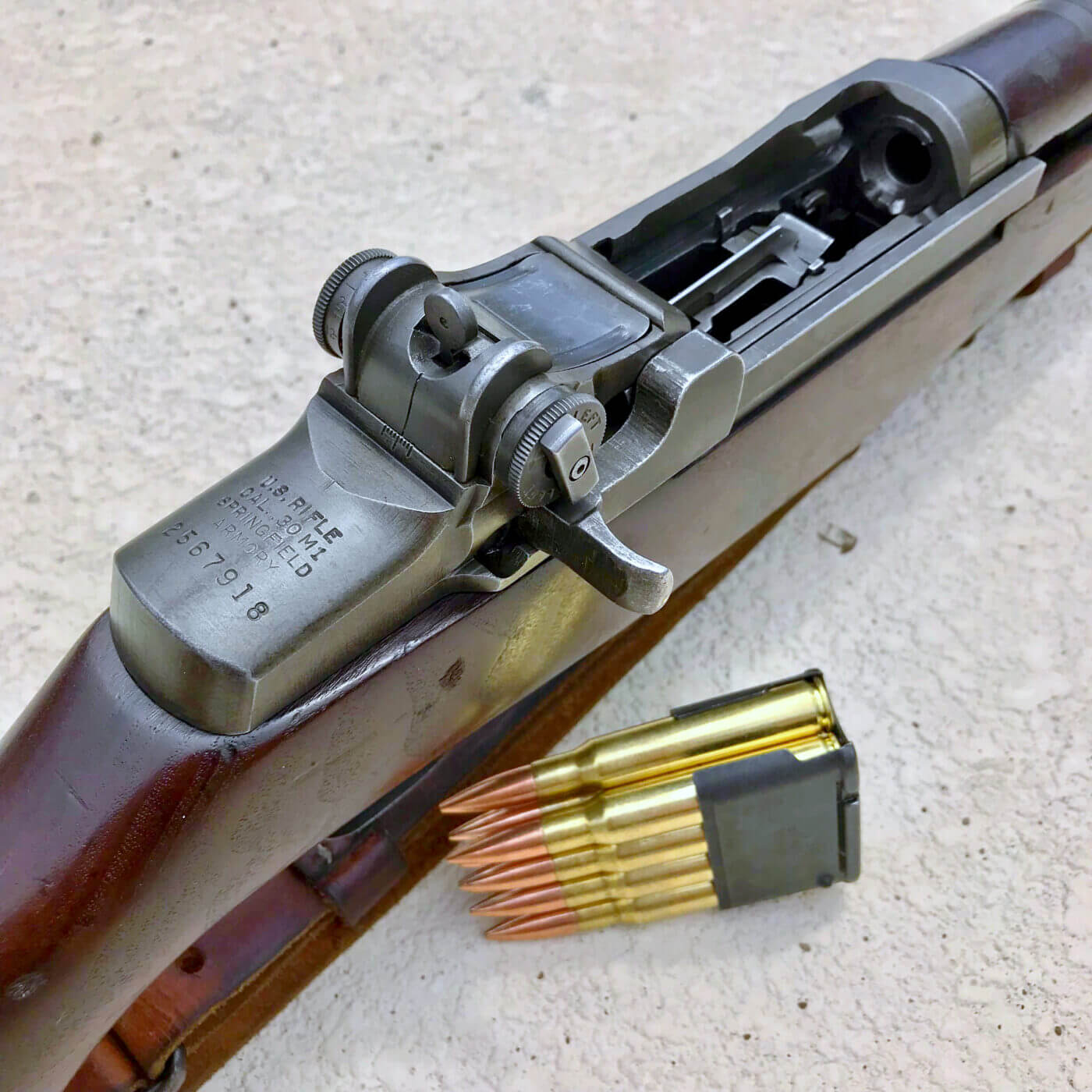
Changes to the rear sight design began with U.S. involvement in World War II.
Parts were simplified to require less machining.
By mid-1942, some simplification had already taken place on the sights.
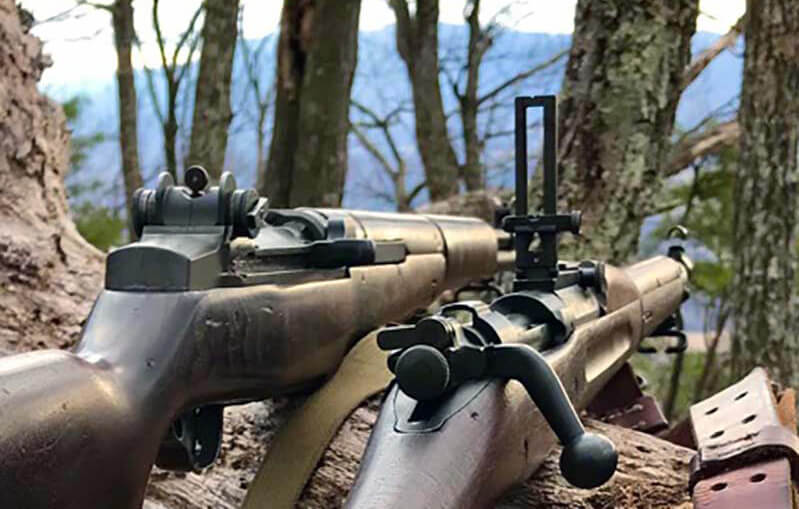
Part numbering was deleted and machining was simplified on the aperture, base, and cover.
The flush nut began to cause problems in theatre.
First, it required a specific tool to tighten it down.
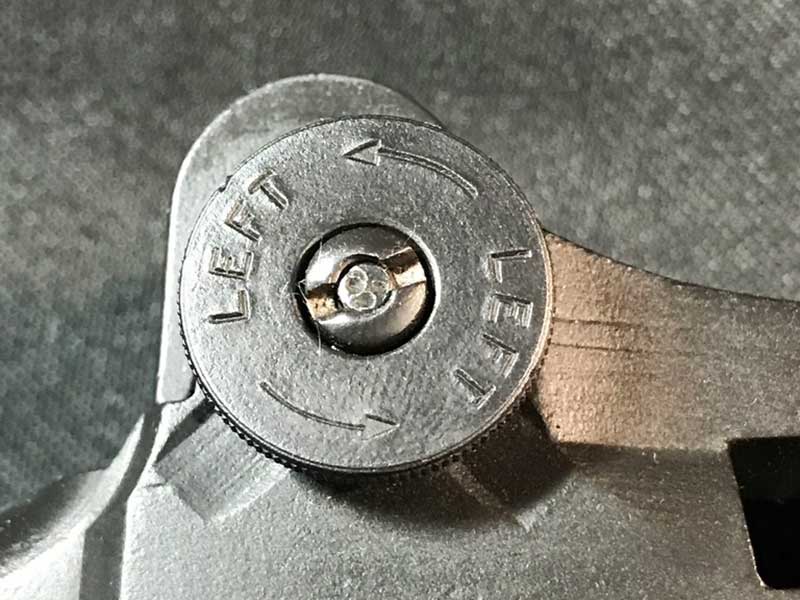
Second, it could be worked loose by adjusting the sight or worse, completely unscrew.
If the flush nut fell off, the knobs would lose retention on the receiver measurement stops and free-spin.
This resulted in a sight that could no longer hold a zero.
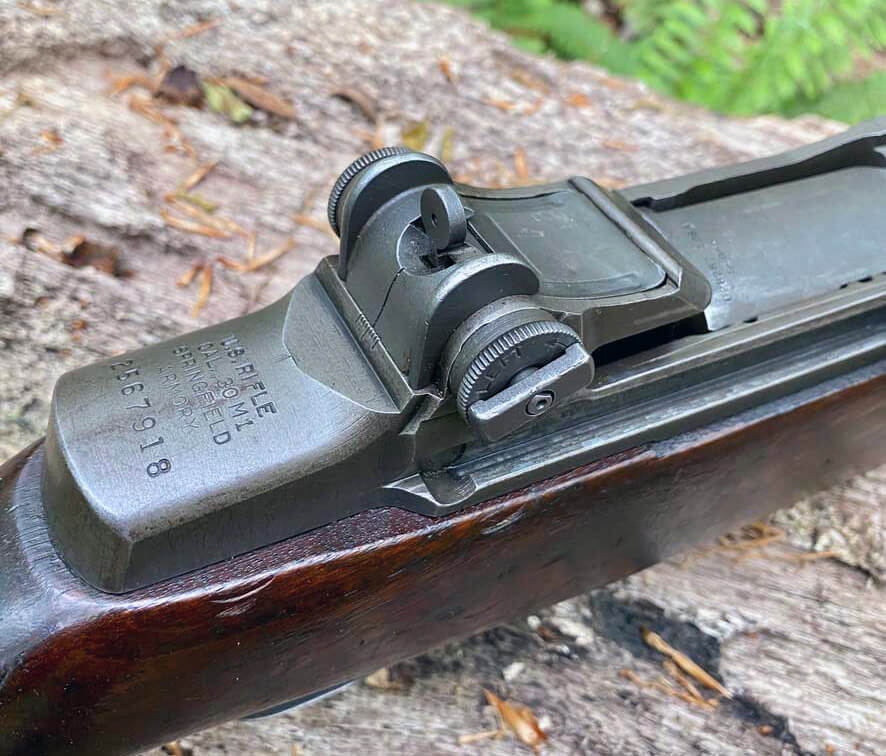
With the lock bar is loosened, elevation and windage adjustments can be made.
When tightened, the lock bar completely locks both knobs in place.
This helped keep the sight together and retain zero more effectively than the previous flush nut.
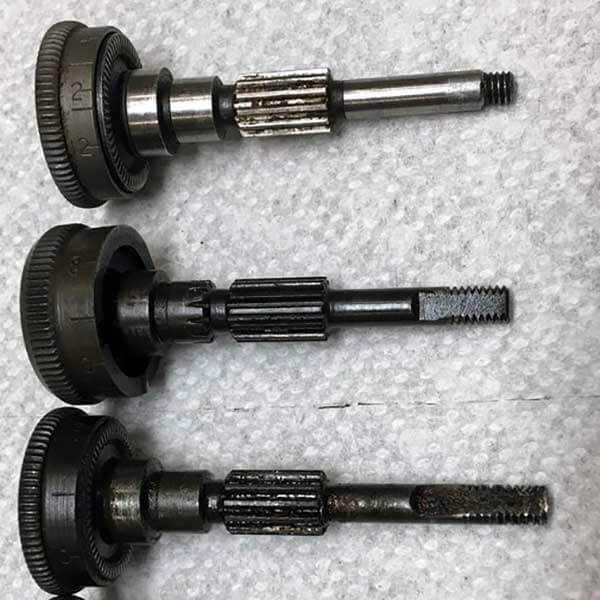
Despite these, there were still issues.
The key in 1 lock bar could still be unscrewed off the pinion.
To correct this, the pinion was lengthened and more threads extending past the windage knob.
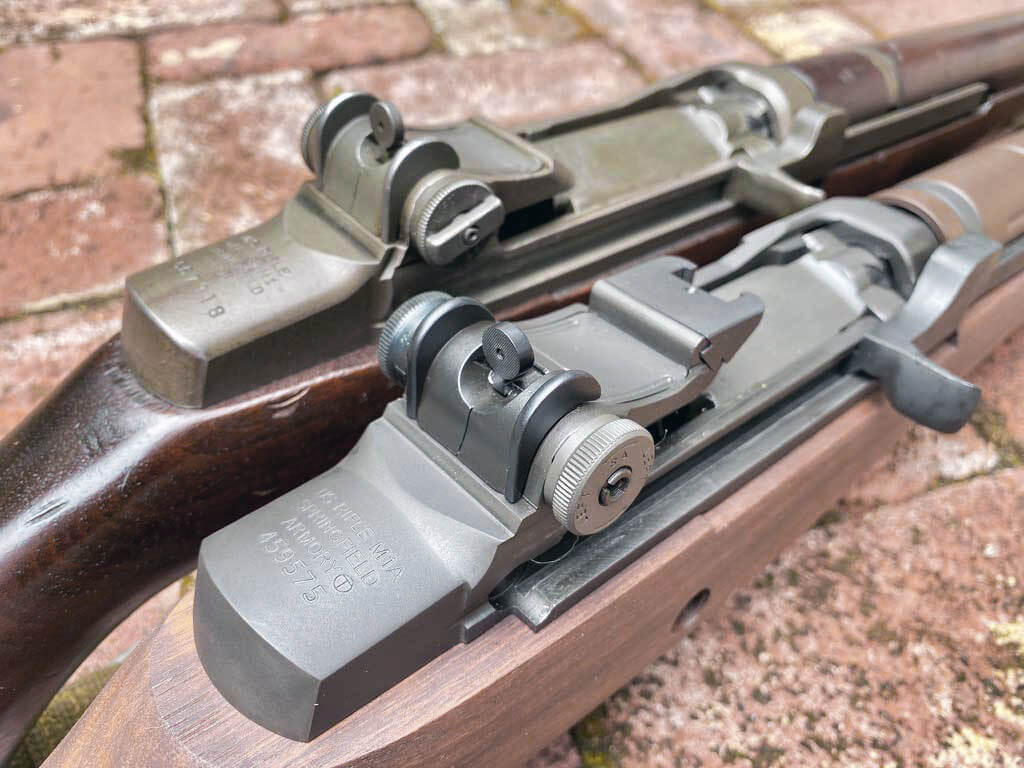
This resulted in the long pinion bang out 2 locking bar, introduced by the beginning of 1943.
The knobs were also enlarged to provide a better grip than previous versions.
The T105 knob and pinion set is the most common key in found on surplus M1s today.

Go to forum thread




